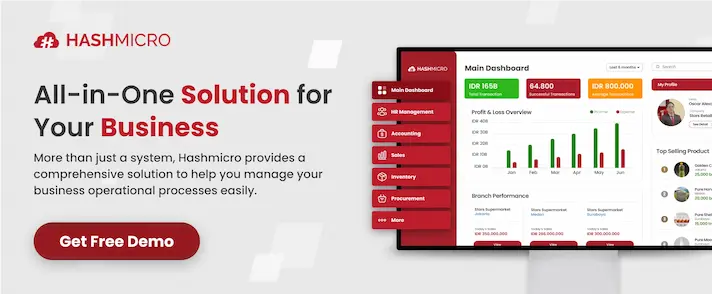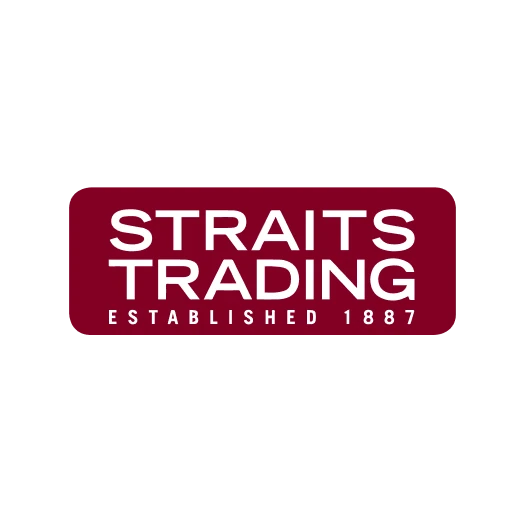Preventive maintenance helps avoid costly equipment breakdowns, reducing downtime, missed deadlines, and frustrated clients. In Singapore, where efficiency is key, disruptions can damage productivity and reputation.
Many companies rely on a reactive approach, only fixing issues after they occur. This leads to higher repair expenses, operational chaos, and delays, negatively impacting profitability and customer satisfaction over time.
Key Takeaways
|
Definition of Preventive Maintenance
Preventive maintenance is a proactive approach to maintaining equipment and assets by conducting regular inspections and servicing before issues arise. It helps businesses minimize unexpected breakdowns, reduce downtime, and extend the lifespan of valuable assets.
Unexpected equipment failures can lead to downtime, lost revenue, and increased repair expenses, all of which can hinder productivity and customer satisfaction. Preventive maintenance mitigates these risks by keeping equipment in peak condition, ensuring smoother operations and fewer interruptions.
Types of Preventive Maintenance
1. Time-Based Maintenance
Time-based maintenance management involves scheduling regular servicing and inspections at predetermined intervals, such as weekly, monthly, or annually.
For example, air conditioning units in office buildings or manufacturing equipment may need regular service to avoid wear and tear.
2. Usage-Based Maintenance
Usage-based maintenance focuses on performing maintenance based on how much the equipment is used.
For example, servicing might be scheduled after a machine has operated for a specific number of hours or processed a certain volume of materials.
This type is particularly effective for businesses where equipment usage varies, such as logistics or manufacturing firms.
3. Predictive Maintenance
Predictive maintenance software leverages advanced technologies like IoT sensors and data analytics to monitor equipment in real time.
This highly cost-efficient approach minimizes unplanned downtime, making it an excellent choice for companies in Singapore looking to stay ahead of disruptions.
Predictive maintenance reduces unnecessary repairs, as interventions are performed only when needed.
4. Condition-Based Maintenance
Condition-based maintenance involves assessing the actual condition of equipment rather than relying on time or usage schedules.
Measurements such as vibration, temperature, or pressure levels help determine an asset’s health.
Businesses can use this data to decide when maintenance is necessary, preventing over-maintenance and saving costs. This method works well for industries like construction and engineering, where equipment operates in dynamic environments.
5. Corrective Maintenance as a Complement
While not strictly preventive, corrective maintenance is often used in conjunction with preventive strategies. Minor issues identified during inspections or predictive monitoring can be addressed immediately before they escalate.
Combining corrective and preventive maintenance ensures a well-rounded approach to asset management.
Examples of Preventive Maintenance
1. HVAC System Maintenance
One common example of preventive maintenance is the regular servicing of heating, ventilation, and air conditioning (HVAC) systems.
In commercial buildings or manufacturing facilities, scheduled filter cleaning, duct inspection, and lubrication of moving parts ensure that these systems operate efficiently.
Preventive maintenance for HVAC systems reduces energy costs, enhances air quality, and prevents sudden breakdowns that could disrupt business operations.
2. Fleet Vehicle Maintenance
Fleet maintenance is a critical preventive measure for businesses in logistics or transportation. Regular checks on tire pressure, engine oil, brakes, and transmission help keep vehicles in optimal condition.
By implementing a schedule based on mileage or operating hours, companies can avoid unexpected breakdowns, reduce fuel consumption, and enhance driver safety.
3. Manufacturing Equipment Maintenance
In manufacturing, preventive maintenance involves routine inspections, cleaning, and part replacements for production machinery.
For instance, regularly inspecting conveyor belts for wear and ensuring proper lubrication of moving parts can prevent costly disruptions.
Singapore’s competitive manufacturing landscape ensures that production schedules remain on track and quality standards are upheld.
4. IT System Updates and Backups
Preventive maintenance isn’t limited to physical equipment, it’s equally important for IT systems.
Regular software updates, antivirus scans, and data backups protect critical business systems from cyber threats and unexpected failures.
Businesses in Singapore’s tech-driven environment can ensure uninterrupted operations and secure sensitive data through preventive IT maintenance.
5. Building Maintenance
For property management companies, preventive maintenance includes regular inspections of plumbing, electrical systems, elevators, and structural elements.
Tasks like checking fire safety systems, repairing minor leaks, and maintaining lighting systems keep buildings safe and functional.
Benefits of Preventive Maintenance

1. Improving Operational Efficiency
Preventive maintenance ensures that equipment and systems operate at their peak performance. Regular inspections and servicing minimize inefficiencies caused by wear and tear, enabling smoother workflows and consistent productivity.
For industries like manufacturing and logistics in Singapore, this translates to faster processes, lower energy consumption, and a streamlined supply chain.
2. Reducing Downtime of Equipment and Machinery
Unexpected breakdowns can disrupt operations, delay production schedules, and increase costs. Preventive maintenance allows businesses to identify and address potential issues before they escalate.
For example, regularly inspecting conveyor belts or engines can prevent sudden failures. Reduced downtime ensures businesses maintain their client commitments and avoid revenue loss.
3. Extending the Lifespan of Assets and Equipment
Proactively maintaining assets like machinery, vehicles, or IT systems significantly extends their lifespan.
For instance, routine oil changes for fleet vehicles or software updates for IT infrastructure keep them functioning optimally for years.
This reduces the need for frequent replacements, saving capital and improving return on investment. In Singapore’s cost-conscious business environment, asset longevity is a valuable advantage.
4. Enhancing Safety and Ensuring Compliance
Maintenance isn’t just about performance—it’s also about safety. Well-maintained equipment reduces the risk of accidents caused by malfunctions.
For example, ensuring that fire alarms, HVAC systems, and electrical installations function properly creates a safer workspace.
Additionally, meeting regulatory standards through regular maintenance helps businesses avoid legal issues and penalties.
5. Lowering Repair Costs
Addressing small issues early prevents them from becoming expensive repairs.
For instance, fixing a minor leak in a building’s plumbing is far cheaper than addressing water damage caused by neglect.
6. Boosting Customer Satisfaction
For customer-facing businesses, preventive maintenance ensures consistent service delivery.
Restaurants, for instance, benefit from regularly maintained kitchen equipment, avoiding delays in serving customers.
Similarly, logistics companies with well-maintained fleets can meet delivery deadlines reliably.
7. Supporting Sustainability Goals
Preventive maintenance contributes to sustainability by reducing waste and energy consumption.
Equipment that operates efficiently uses fewer resources, and extending asset lifespan reduces the environmental impact of frequent replacements.
For Singaporean businesses committed to green initiatives, this added benefit aligns with global sustainability trends.
8. Increasing Workforce Productivity
Well-maintained equipment allows employees to work without interruptions or delays caused by equipment failure.
This boosts productivity and improves employee morale, as they can rely on the tools they need to perform their tasks effectively.
Difference Between Preventive and Corrective Maintenance
- Timing: Preventive maintenance is scheduled in advance, while corrective maintenance happens after a failure.
- Cost: Preventive maintenance incurs smaller, regular expenses; corrective maintenance often involves high emergency costs.
- Downtime: Preventive maintenance reduces unexpected downtime, whereas corrective maintenance can cause unplanned operational disruptions.
- Focus: Preventive maintenance emphasizes asset longevity, while corrective maintenance prioritizes immediate problem resolution.
- Risk: Preventive maintenance minimizes the risk of critical failures, while corrective maintenance accepts risks of unforeseen breakdowns.
The Future of Preventive Maintenance with AI and IoT
Combining AI and IoT creates a powerful ecosystem for predictive and preventive maintenance.
IoT devices gather real-time data, which AI processes to deliver actionable insights. This allows businesses to transition from reactive or schedule-based maintenance to a predictive approach that maximizes efficiency.
For instance, in a smart building, IoT sensors can monitor HVAC systems, lighting, and elevators, while AI algorithms analyze this data to recommend optimal maintenance schedules. This reduces energy consumption, prolongs asset life, and lowers overall costs.
Challenges in Preventive Maintenance
- High Initial Costs
Purchasing tools, hiring skilled personnel, or implementing software can be expensive. For example, a small logistics company may hesitate to invest in fleet management software due to upfront costs. - Resource Constraints
Maintaining skilled staff and balancing maintenance with operations can be tough. For example, a restaurant struggles to schedule equipment checks during busy hours. - Difficulty in Scheduling
Finding the right time for maintenance without disrupting operations is challenging. For example, a manufacturing plant delays equipment servicing to avoid halting production lines. - Lack of Data and Analytics
Without proper monitoring tools, businesses might rely on guesswork. For example, a company without IoT sensors can’t detect early signs of motor failure. - Resistance to Change
Teams may resist switching from reactive maintenance to proactive maintenance. For example, technicians used to emergency repairs may find scheduled maintenance unnecessary. - Managing Diverse Assets
Different types of equipment require varied maintenance plans. For example, hospitals must maintain medical devices and air conditioning systems with unique schedules. - Technology Integration
Implementing advanced tools like IoT or AI can be complicated and time-consuming. For example, integrating sensors into legacy machines in a traditional factory can be challenging. - Compliance and Regulations
Meeting industry standards can make maintenance more complex. For example, construction companies must regularly ensure cranes meet safety checks to comply with regulations. - Measuring ROI
Demonstrating cost savings isn’t always immediate. For example, a retail store can’t easily quantify the savings from avoiding HVAC failures.
Technology for Preventive Maintenance

Asset management software like HashMicro provides an all-in-one solution to tackle the challenges of preventive maintenance, making it an invaluable tool for businesses in Singapore. With automated maintenance scheduling, the software ensures timely servicing of assets without disrupting daily operations. This eliminates the hassle of manual planning and reduces the risk of missed maintenance, helping businesses maintain consistent operations while avoiding costly downtime.
One of the standout features is the integration of IoT technology, enabling real-time monitoring of equipment health. Sensors can track critical parameters such as temperature, vibration, and usage, allowing the system to detect potential issues before they escalate.
This proactive approach minimizes the risk of unexpected breakdowns and optimizes resource allocation by performing maintenance precisely when needed. Additionally, the centralized dashboard provides businesses with a clear overview of all assets, ensuring better visibility and control.
Warning: Undefined array key "med" in /home/hashmicr/public_html/blog/wp-content/plugins/insert-headers-and-footers/includes/class-wpcode-snippet-execute.php(419) : eval()'d code on line 281

Conclusion
Preventive maintenance is key for businesses to optimize operations, reduce costs, and extend asset lifespan. Proactive measures like inspections and predictive monitoring minimize downtime, improve safety, and support sustainability.
However, implementing preventive maintenance can be challenging due to high initial costs, resource constraints, and data integration. Solutions like HashMicro’s Asset Management Software help address these issues with automated scheduling and real-time monitoring.































